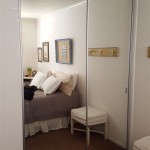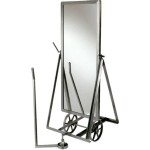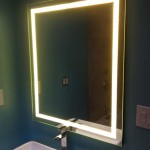How To Temporarily Fix A Broken Car Side Mirror
A broken side mirror on a vehicle presents an immediate safety hazard and a legal issue in many jurisdictions. Operating a motor vehicle with a damaged or missing side mirror can significantly reduce visibility, increasing the risk of accidents. While a permanent replacement or professional repair is the recommended long-term solution, there are temporary fixes that can be implemented to restore some degree of functionality and ensure safer driving until a proper repair can be scheduled. This article outlines several methods on how to temporarily fix a broken car side mirror, emphasizing safety precautions and detailing materials needed for each approach.
The scope of the damage can range from a cracked mirror surface to a completely detached mirror housing. The chosen repair method will depend on the severity of the damage, the availability of tools and materials, and the individual's skill level. It is crucial to remember that these are temporary fixes designed to provide a short-term solution. Prolonged use with a temporarily fixed mirror is not advisable, and a professional repair should be prioritized as soon as possible.
Assessing the Damage and Gathering Supplies
Before attempting any repair, a thorough assessment of the damage is essential. This involves identifying the extent of the damage to the mirror itself, the housing, and any connecting components. Check if the mirror is simply cracked, shattered but still in place, or completely detached. Examine the housing for cracks, broken pieces, or loose connections. Also, inspect the mechanism that allows the mirror to be adjusted, as this may also be damaged.
Once the damage is assessed, gather the necessary supplies. Common materials used for temporary side mirror repairs include:
- Duct tape: A versatile and readily available adhesive that can hold pieces together and secure the mirror in place. Choose a high-quality duct tape for better adhesion and durability.
- Automotive-grade adhesive: A stronger adhesive option for bonding broken pieces, especially if the damage is more extensive. Ensure the adhesive is compatible with the materials of the mirror and housing.
- Epoxy resin: A two-part adhesive that provides a strong and durable bond. This is suitable for repairing cracks and filling gaps in the mirror housing. Follow the manufacturer's instructions carefully when mixing and applying epoxy resin.
- Replacement mirror glass: Pre-cut or universal replacement mirror glass can be temporarily attached to the housing if the original mirror is missing or beyond repair.
- Cardboard or foam board: These materials can be cut to size and used as backing for the mirror glass, providing additional support and stability.
- Utility knife or scissors: For cutting tape, cardboard, or foam board to the desired size and shape.
- Cleaning supplies: A clean cloth and glass cleaner are necessary to remove dirt and debris from the mirror surface and housing before applying any adhesive or tape.
- Safety glasses and gloves: These are essential for protecting your eyes and hands from sharp edges, broken glass, and chemicals.
Having all the necessary supplies readily available will streamline the repair process and ensure a safer and more effective outcome.
Methods for Temporarily Fixing a Broken Side Mirror
Several methods can be employed to temporarily fix a broken car side mirror, each suited for different types of damage. The following are some of the most common and effective approaches:
Duct Tape Method: This is the simplest and most readily accessible method, ideal for minor cracks or securing a loose mirror. Clean the area around the crack or detached mirror with a clean cloth and glass cleaner. Apply strips of duct tape across the crack or around the mirror housing, ensuring that the tape adheres securely to both surfaces. Overlap the tape strips to create a strong and waterproof seal. For a loose mirror, use duct tape to secure it to the housing, ensuring it is positioned to provide adequate visibility. While duct tape is easily applied, it is important to note that it is not a long-term solution and can deteriorate quickly under weather conditions.
Automotive Adhesive Method: This method is suitable for bonding broken pieces of the mirror or housing back together. Clean the surfaces to be bonded with a clean cloth and glass cleaner. Apply a thin layer of automotive-grade adhesive to both surfaces and press them together firmly. Hold the pieces in place with clamps or tape until the adhesive dries completely, following the manufacturer's instructions for drying time. Remove any excess adhesive with a clean cloth. This method provides a stronger bond than duct tape, but proper surface preparation and clamping are crucial for a successful repair.
Epoxy Resin Method: For larger cracks or gaps in the mirror housing, epoxy resin can be used to fill the voids and create a strong, durable repair. Clean the area around the crack or gap with a clean cloth and glass cleaner. Mix the two parts of the epoxy resin according to the manufacturer's instructions. Apply the mixed epoxy resin to the crack or gap, filling it completely. Smooth the surface of the epoxy resin with a putty knife or similar tool. Allow the epoxy resin to cure completely, following the manufacturer's instructions for curing time. Sand the surface of the cured epoxy resin to create a smooth finish. This method provides a robust repair but requires careful mixing and application of the epoxy resin.
Replacement Mirror Glass Method: If the original mirror is missing or shattered beyond repair, a replacement mirror glass can be temporarily attached to the housing. Measure the dimensions of the mirror housing or the original mirror glass, if available. Cut a piece of replacement mirror glass to the measured dimensions using a glass cutter or utility knife. Alternatively, purchase a pre-cut replacement mirror glass that matches the size of the original mirror. Clean the mirror housing with a clean cloth and glass cleaner. Apply a thin layer of automotive-grade adhesive or double-sided tape to the back of the replacement mirror glass. Carefully position the replacement mirror glass onto the mirror housing and press it firmly into place. Use clamps or tape to hold the replacement mirror glass in place until the adhesive dries completely. This method restores visibility but requires careful handling of the glass and precise measurements.
Ensuring Safety and Legal Compliance
Regardless of the chosen repair method, safety should always be the top priority. Wear safety glasses and gloves to protect your eyes and hands from sharp edges, broken glass, and chemicals. Work in a well-ventilated area, especially when using adhesives or epoxy resin. Dispose of broken glass and other waste materials properly. After completing the temporary repair, check the mirror's functionality and visibility before driving. Ensure that the mirror is securely attached and provides an adequate field of vision.
Many jurisdictions have laws regarding the required functionality of side mirrors on motor vehicles. Operating a vehicle with a broken or missing side mirror may result in a traffic ticket or citation. Therefore, it's crucial to be aware of the local laws and regulations regarding side mirrors. Even with a temporary repair, it is advisable to schedule a professional repair or replacement as soon as possible to ensure compliance with the law and maintain optimal safety.
Following the temporary repair, routinely inspect the mirror to ensure the fix continues to hold. External factors, such as strong winds, extreme temperature, or vibrations from the road, can cause the temporary fix to fail. If the repair starts to weaken, reapply materials as needed or consider a more robust temporary solution until a permanent repair is possible. Always prioritize safety while driving, even with the temporary fix in place.
While temporary repairs can provide a short-term solution, it is essential to recognize their limitations. These repairs are not intended to replace professional repairs and may not provide the same level of structural integrity or visibility as a new or professionally repaired mirror. Promptly scheduling a professional repair will ensure the long-term safety and functionality of the vehicle's side mirrors.
Consider contacting a local auto body shop or mechanic to discuss the repair options and schedule an appointment. Alternatively, investigate the cost of buying a replacement mirror assembly and installing it yourself. Numerous online resources and tutorials can guide the installation of a replacement mirror, making it a viable option for individuals with some mechanical aptitude.
In conclusion, temporarily fixing a broken car side mirror involves assessing the damage, gathering necessary supplies, and implementing a suitable repair method. Whether using duct tape, automotive adhesive, epoxy resin, or replacement mirror glass, prioritizing safety and legal compliance is essential. Remember that these are temporary solutions, and a professional repair should be scheduled as soon as possible to ensure the long-term safety and functionality of the vehicle.

How To Fix A Broken Car Side Mirror Using Xtreme Tape

How Do You Temporarily Fix A Broken Wing Mirror Turborevs

How To Quick Fix A Side View Mirror Tutorial

Broken Side Mirror Here S How To Get It Fixed By A Mechanic Quickly In The Garage With Carparts Com

How To Fix A Broken Car Side View Mirror Easy And Free

Replace A Broken Side View Mirror Diy Family Handyman

Do I Need To Entirely Replace A Ed Mirror Yourmechanic Advice

Broken Side Mirror Here S How To Get It Fixed By A Mechanic Quickly In The Garage With Carparts Com

How To Fix A Broken Car Side View Mirror Easy And Free

Replace A Broken Side View Mirror Diy Family Handyman








